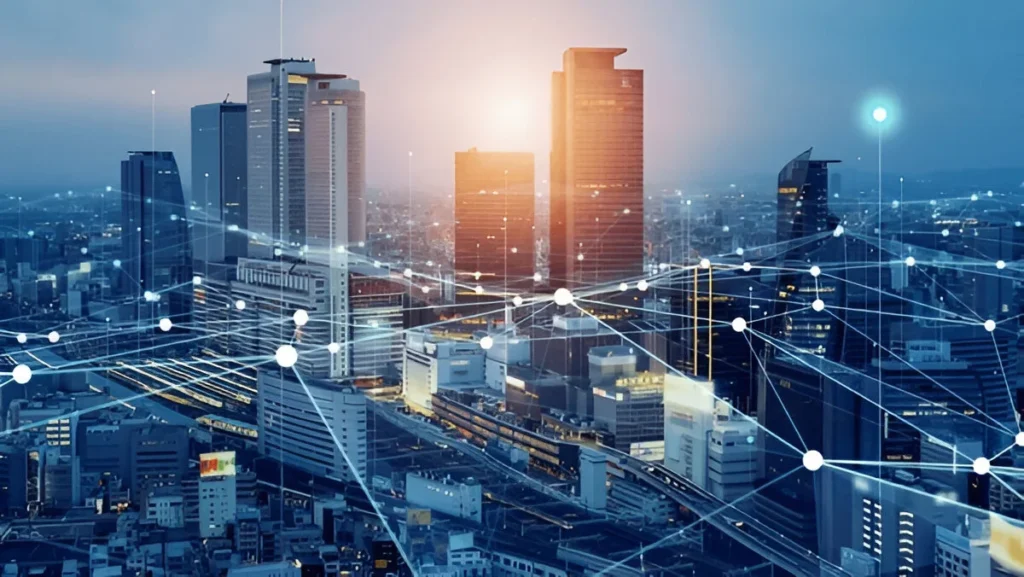How Smart Security Systems Enhance Safety in Modern Buildings

Table of Contents:
- Introduction to Smart Security Systems
- Key Features of Smart Security Systems
- Integration with Building Management Systems
- Benefits of Smart Security in Modern Buildings
- Challenges and Solutions in Implementation
- Future Trends in Smart Security Technologies
- Global Impact of Enhanced Security Systems
Introduction to Smart Security Systems
In an ever-evolving world where technology plays a pivotal role in shaping the fabric of daily life, smart security systems have emerged as crucial components in the architecture of modern buildings. These systems, powered by advancements in smart building tech, offer holistic safety solutions that are not only efficient but also responsive to dynamic environmental changes. Designed to preempt and address security concerns, these systems integrate cutting-edge technology to ensure both personal safety and the protection of valuable assets.
Smart security infrastructures utilize interconnected sensors, cameras, and automated processes to offer enhanced security measures. This connectivity ensures a collaborative approach to security management, moving from traditional reactive measures to a more proactive stance. This shift is pivotal in ensuring that modern spaces remain secure and adaptable to emerging challenges in our increasingly digital world.
Key Features of Smart Security Systems
At the heart of smart security systems are features tailored to address the multifaceted nature of threats modern infrastructures face. High-resolution surveillance cameras equipped with facial recognition and behavioral analytics stand as the bulwark of these systems. Capable of discerning typical behavior patterns, these cameras can swiftly identify and alert security personnel about atypical activities, elevating the response capability within moments of anomaly detection.
Moreover, advanced motion detectors employ artificial intelligence to enhance their accuracy, allowing them to filter out false alarms triggered by innocuous movements—such as animals or weather phenomena—while remaining sensitive to genuine threats. Complementing these detection mechanisms is the ability for remote access, empowering users to monitor their premises in real time from any location worldwide. This amalgamation of features guarantees peace of mind and fortifies security infrastructure with a responsive and intuitive defense system.
Integration with Building Management Systems
Integrating smart security systems with comprehensive building management systems (BMS) signifies a groundbreaking evolution in building operations. Such integration not only enhances the safety regime of a building but also provides a holistic approach to managing a building’s operative ecosystem. Through such collaboration, an identified security threat can trigger a domino effect of responses managed by the BMS—securing access points, rerouting occupants to safe zones, or automatic notifications to emergency services.
Additionally, the synergy between security systems and BMS transcends safety, contributing to energy optimization by adjusting lighting, heating, and cooling systems based on real-time occupancy data. This holistic integration ensures that the building’s operation is optimized for safety, comfort, energy efficiency, and overall occupant satisfaction, setting a benchmark for future building designs.
Benefits of Smart Security in Modern Buildings
Smart security systems provide many benefits that extend well beyond traditional definitions of safety. Among the myriad advantages these systems bring is a significant reduction in the dependence on traditional security personnel. Equipped with automated surveillance and immediate alert mechanisms, these systems offer around-the-clock monitoring, facilitating faster response times and curtailing potential incidents of theft, vandalism, and unauthorized access. These efficiencies translate into substantial cost savings over time.
Furthermore, incorporating smart security technologies enhances a building’s appeal in the real estate market. Properties that prioritize advanced security systems are viewed as more attractive investments by potential buyers and lessees, thus enhancing their market value and desirability. This benefit is significant in a competitive real estate market where security is a compelling factor for prospective clients, ensuring that investments in smart security yield both immediate and long-term returns.
Challenges and Solutions in Implementation
Despite the clear advantages, the deployment of smart security systems is not without its challenges. A prominent concern lies in data privacy; these systems’ extensive data collection capabilities necessitate rigorous cybersecurity measures to guard against unauthorized data breaches and misuse. Compatibility between various components and systems poses another significant challenge, demanding seamless interoperability to ensure effective implementation.
Addressing these challenges calls for a multifaceted approach. Manufacturers and developers are increasingly focusing on developing advanced encryption protocols to protect data robustly. Solutions are also being devised to improve interoperability standards, fostering an ecosystem where diverse system components can work cohesively. As technological advancements progress and associated costs decrease, these hurdles will likely become less daunting, paving the way for widespread adoption of smart security solutions.
Future Trends in Smart Security Technologies
The trajectory of smart security technologies is marked by continual innovation and advancement. Integrating artificial intelligence and machine learning into security systems heralds a new era of predictive analytics that preempts and mitigates potential threats before they manifest. Algorithms that identify patterns and flag deviations from customary behaviors provide a proactive approach to potential security breaches.
Moreover, biometric access control represents a noteworthy trend, with technologies such as fingerprint and retina scans offering enhanced security over traditional key systems. By leveraging unique biometric identifiers, these systems ensure access is granted solely to authorized individuals, mitigating the risk of unauthorized entry.
Global Impact of Enhanced Security Systems
The global impact of smart security systems transcends their application in individual buildings, enhancing public safety and reducing crime rates on a broader scale. These systems contribute to safer neighborhoods and more secure urban environments by deterring unlawful activities with advanced detection capabilities. The reassuring presence of such technologies fosters a sense of safety and well-being, empowering communities to thrive. From an economic standpoint, the proliferation of smart security systems spurs job creation within technology and security sectors, fostering innovation and growth. Additionally, their implementation positively impacts the real estate market by increasing the value and desirability of properties. As smart security solutions are adopted more widely, they promise to enhance global community resilience and prosperity.







